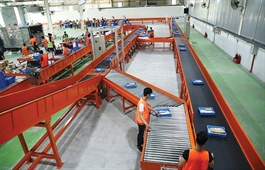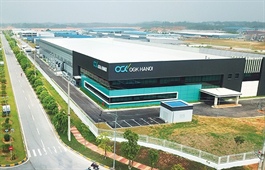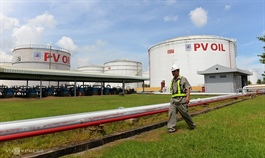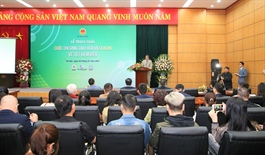Desire for long-term tactics in solar power
Desire for long-term tactics in solar power
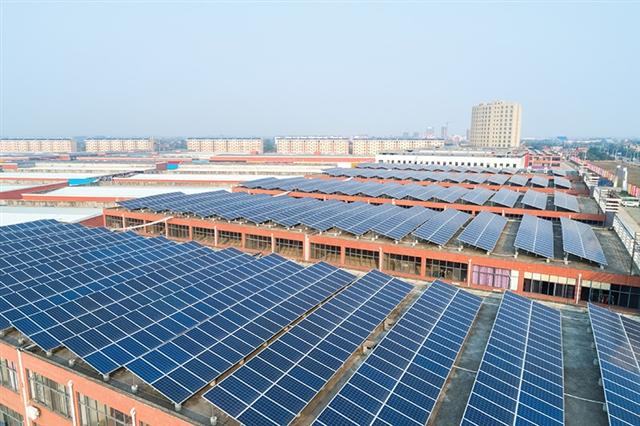
Industry leaders are looking for longer rate timeframes in order to stabilise development of solar power in the country
|
Vietnam’s solar power story is closely tied to its long-term goal of power diversification. The launch of the country’s first solar power plant in the central province of Thua Thien-Hue in October 2018 by TTC Group became convincing proof that the Ministry of Industry and Trade (MoIT) has supported development of solar power projects according to Decision No.11/2017/QD-TTg dated April 11, 2020 on support mechanisms for solar power development in Vietnam.
With the support of the government, the renewable energy sector, especially solar power, has since then witnessed strong growth, boosted by fixed prices through feed-in tariffs (FiT), especially on a larger industrial scale.
However, the development also exposed inadequacies, as negative impacts reached the market and investors due to the short validity of the first FiT, which ended after just one year as Decision 11 was valid from June 1, 2017 to June 30, 2019.
Exceeding expectations
Vu Phong Solar JSC, a company that operates a 250MW solar power plant in the south-central province of Ninh Thuan, plans to deploy 100 megawatts-peak of rooftop solar this year, but the fact that FiT3 has not yet been agreed on may hinder the company’s goal. “The problem of the market today is not the technical solution or the source of capital, but the belief in the power source,” said Pham Nam Phong, general director of Vu Phong Solar.
He said customers are still afraid of contracts lasting up to 20 years, even though the suppliers state clear commitments during the handover phase, leaving systems operating at 80 per cent of original capacity.
The Vietnamese government issued FiT rates much later than other countries with the same potential, such as Thailand and Italy, or countries with even lower potential like Germany and Slovakia. These nations have all successfully developed solar power through state-led FiT rates.
In 2017, the Vietnamese government enacted Decision 11, with the first FiT for all types of 9.35 US cents per kWh, which expired in June 2019. With these attractive prices, Vietnam emerged as the country with the fastest growth rate of solar power in the world within a short time, with most of the plants located in Ninh Thuan and its neighbouring Binh Thuan province. However, when Decision 11 expired with no follow-up FiT, many projects fell into hibernation. This period lasted for more than nine months until the government issued Decision No.13/2020/QD-TTg regulating FiT2, which priced solar power at 7.09 US cents per kWh. Prices for floating solar arrays on the water stood then at 7.69 US cents and those for rooftop solar power at 8.38 US cents per kWh. Now, Decision 13 has also expired, leaving the market yet again waiting.
Petitions to extend FiT2 at least until the end of 2021 have yet to be approved. The Electricity and Renewable Energy Authority (EREA) under the MoIT said last month that policies and regulations on solar power development should be further reviewed and adjusted to approach a competitive market while ensuring enhancement of management efficiency and quality of operations.
However, the EREA also acknowledged limitations in the FiT mechanism, pointing out that projects focusing on areas with high solar potential led to overloading the grid in some areas, affecting its stability and increasing competition for land.
In addition, price-making mechanisms have limited control over the scale of resource and development planning. At the same time, the price of solar power hardly reflects the changes in technology prices.
The growth of solar power in Vietnam has exceeded expectations. The total installed solar capacity in Vietnam has reached about 19,400MWp (including nearly 9,300MWp of rooftop solar power), equivalent to 16,500MW, and accounting for about a quarter of total installed power capacity within the national electricity system, according to state-run Electricity of Vietnam (EVN).
Nguyen Anh Dung, project officer of the GIZ’s Renewable Energy and Energy Efficiency (REE) project observed that “the market has been faster than state regulators, despite their transitions in recent years.” Compared with the complexity of wind power, the time to install a solar power system is much shorter, helping investors recover capital faster.
Up to now, only about 600MW of wind power has been exploited.
“The MoIT and EVN still need more time to learn how to respond to market developments,” Dung explained. “One of the advantages of the FiT rates for solar power is the created excitement within the Vietnamese market.”
However, support for solar power development through FiT in Vietnam is facing two major problems, Dung commented. “Firstly, a lot of unprofessional investors pour money into solar power. Competition has left many small investors to stay out of the market. This harshness shows that not all investments in solar power are profitable.”
Secondly, many investors lack experience in establishing solar power plants. Some may seek the assistance of electrical engineers, but Vietnam is short of such professionals and may need another 10-15 years to form a generation of professional solar power engineers.
Clear policy help
Currently, Vietnam’s economy mainly depends on traditional fuels, but these energy sources need to be supplemented by renewable energy sources, with the sun being one of the obvious choices.
However, “developing a clean electricity source depends a lot on which direction politicians want the country to develop towards,” Sven Ernedal, project manager of the REE project, told VIR.
According to Ernedal, only when there is a clear path with suitable policies in place can proper solutions be implemented.
Data from the Vietnam Institute of Energy showed that Vietnam can theoretically develop about 386GW of solar power, concentrated in the south, in south-central Vietnam, and in the Central Highlands.
Legal restrictions will also have certain effects on the market, making investments in solar power somewhat less meaningful. According to Ernedal, when the FiT3 rates are issued, the projects already completed and installed will reap huge benefits.
The GIZ already has recommendations for FiT rates for furthering renewable energy development in Vietnam, and stated that the current shortcomings will be remedied if the country establishes a long enough timeframe for solar power development. “It would be better if Vietnam offered a longer timeframe, perhaps five years, but ideally the contract durations should remain stable for around 20 years, as that is the time it takes to invest and develop large-scale power plants,” Ernedal said.
A transparent and competitive market could also help to eliminate investors without enough financial and technological capacities and put the focus more on capable businesses. Without FiT rates, the more capable ones may get discouraged and give up. “I think that is the way to eliminate unprofessional investors from entering this field. Then, the market could focus on professional ones,” Ernedal stated.
Dung of REE added that the cliff effect “will be significantly reduced if Vietnam prolongs its support mechanism through FiT rates for at least five years” while reducing prices every six months.
When the FiT3 rates will come remains yet to be determined. But from a business perspective, Phong of Vu Phong Solar still hoped that the rates will be designed in the direction of prioritising the development of distributed rooftop solar power, with higher prices in areas with lower radiation, such as the north.
Each region could then offer more preferential rates for smaller systems under 100 kilowatt-peak due to higher investment rates. These policies, Dung said, will help encourage more people and smaller businesses to invest in rooftop solar power, thereby reducing the risk of power shortages in the vicinity while large sources of electricity and transmission lines could be deployed in the future.







